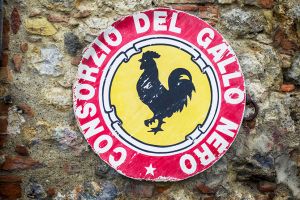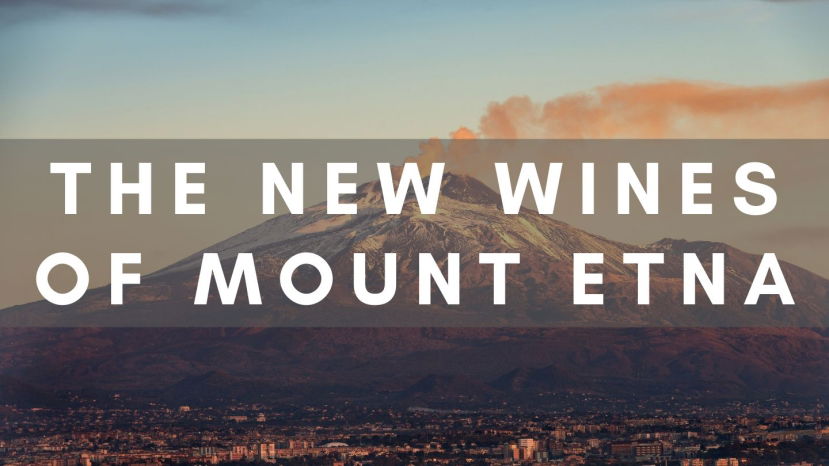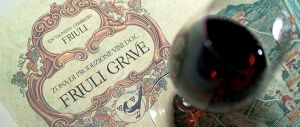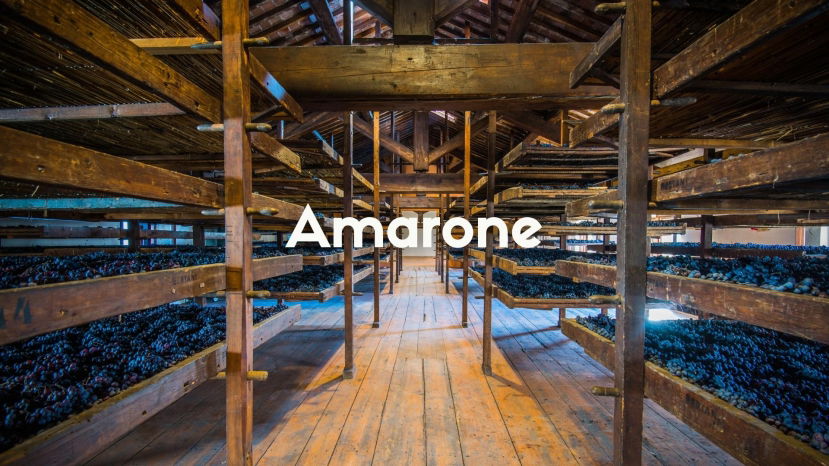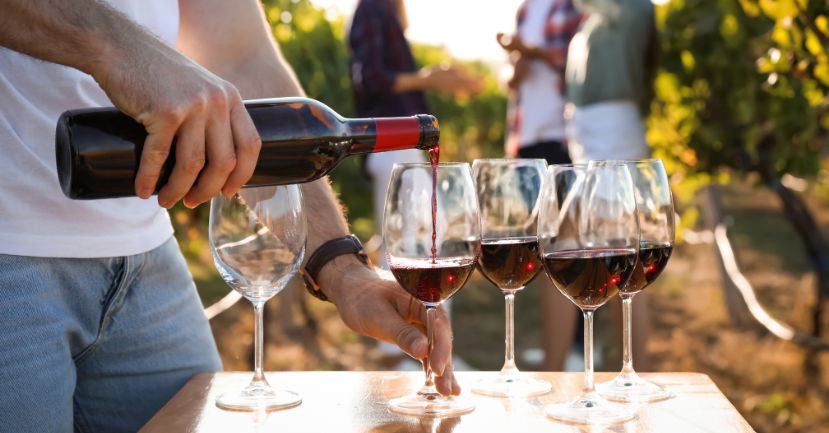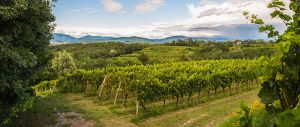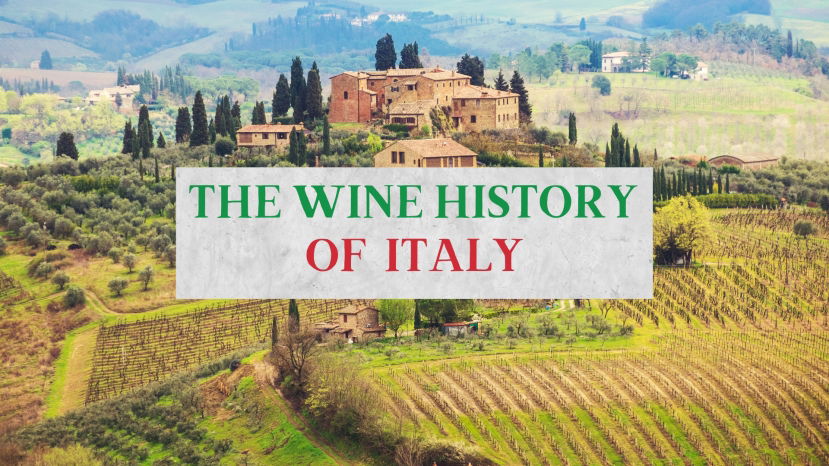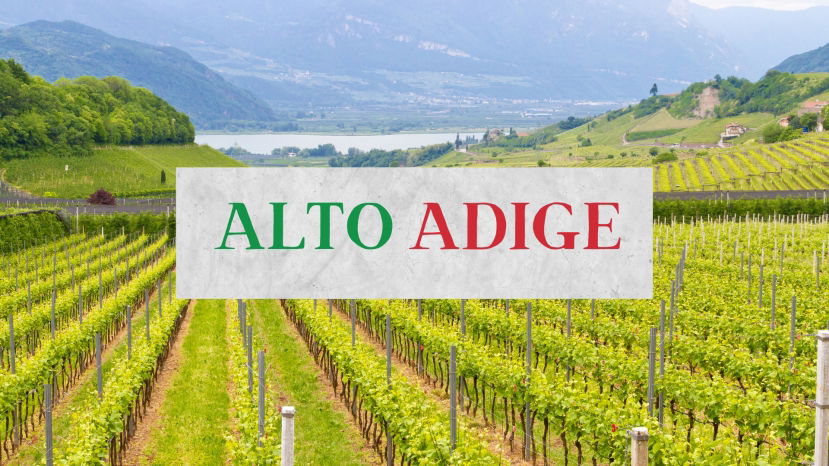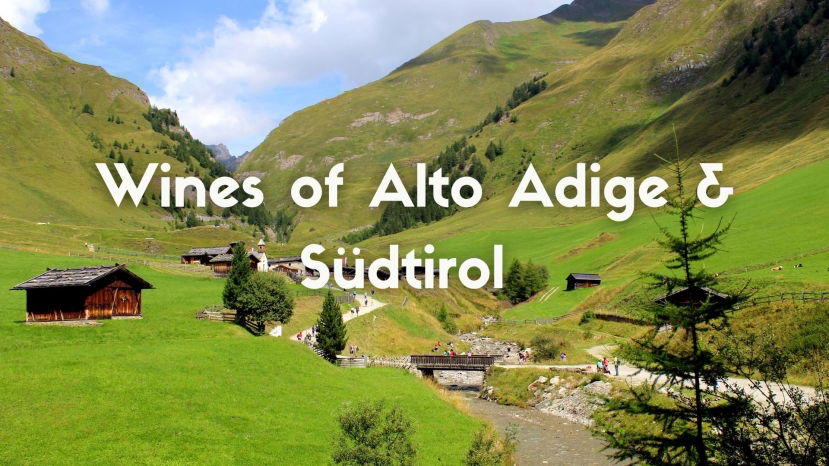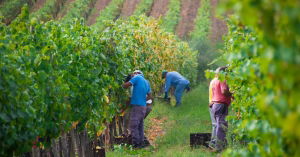BLOG
Italian Wine
The Gallo Nero (Black Rooster) was the historic symbol of the League of Chianti and has become the symbol of the wines of Chianti Classico. The Black Rooster symbol is linked to a medieval legend that takes place during the time of open hostilities between Firenze and Siena for control of the Chianti territory.
Summary:
By examining Mount Etna's peculiarities, history, and modern practices we are able to learn why these inimitable volcanic wines have everyone talking about Sicily.
Presenter: Benjamin Spencer DipWSET
Benjamin Spencer is an award-winning American author, journalist, and the founder of the Etna Wine School, a wine consulting company on Mount Etna, in Sicily. After making
Advances in the cellars coupled with better vineyard management and Friuli’s natural gift of a temperate climate, resulted in concentrated wines with an extra layer of richness. From the 1970s onward, Friuli gained commercial success and popularity for its white wines.
Friuli Grave DOC Friuli Grave was previously called Grave del Friuli but is often simply referred to as Grave. This is the largest DOC, both in terms of area under vine and in production. It accounts for more than one-third of Friuli’s total wine production.
Summary:
Amarone relies on one of the world’s oldest winemaking techniques which results in some of the world’s most delicious wine. Through a combination of natural factors and human intervention the indigenous Corvina grape and cast of supporting varieties gives us several different styles of Amarone.
Join Valpolicella wine specialist Deborah Parker Wong for a webinar that reveals
The best way to make sense of Italian red wines is to simply start tasting them. Italy offers the perfect red wine for every occasion—from pizza on Monday to roast beef with the in-laws on Sunday.
Many of Italy's best red wines are labeled with the name of the wine appellation, often combined with the grape variety. If you've ever felt wholly overwhelmed while browsing an Italian wine section, knowing just a few key wine names will help keep your shopping trip focused and ensure that you have the perfect wine to drink at a moment's notice.
The Super-Whites of Friuli In the late 1970s, the producer, Jermann, created Vintage Tunina, a complex blend of native and international white grapes that became iconic among Friuli’s superior white blends. Throughout the 1980s and 1990s, Jermann inspired several other Friuli producers, particularly in the DOCs of Collio and Friuli Colli Orientali.
Summary:
Italy has a unique history among European wine-producing countries. This webinar will explore the factors influencing contemporary Italian wine from the Roman era to the present, with a focus on the accelerated pace of transformative events over the past 170 years, which have shaped contemporary Italian wines. Italian wine can feel overwhelmingly complex, but when one understands the context of how and why Italian wine became so multifold and diverse, the
Summary:
Alto Adige is a land of spectacular contrast and diversity. Positioned in northeast Italy, on the sunny side of the Alps, it is an area where men and mountains have met for centuries. It is a frontier region; not just politically but geographically, climatically, and viticulturally. Winemaking here requires a special skill set.
Vineyards are planted from 200m to 1000m and experience huge diurnal swings in temperature, while alpine
Summary:
Two languages spoken side by side is only one of the many unique characteristics of this stunning wine region, formerly a part of Austria, and since 1919, a part of Italy. Today it embraces the best of both cultures and languages but identifies as purely South Tyrolean. Nestled in the northeastern part of the country, in the shadow of the dramatic Dolomite Mountain peaks, Italy’s northernmost wine
I returned to Campania recently for the first time in three years and as with most Italian regions, discovered that not much had changed, at least as far as appearances are concerned. I did meet a few producers I hadn’t visited before, with one of them – Petilia – being a great new discovery for me. More on that below, but overall what impressed me most was the consistency of the wines, white and red.
Italian reds have become famous all over the world, characterized by their intense structures, rich perfumes and distinctive personalities, often derived from the peninsula’s characterful native grape varieties.
In a country famous for red wine, Italy’s white wines are often overlooked. Although the country has gone global with a range of crisp, well-priced and crowd-pleasing whites, there’s plenty of seriously impressive Italian white wine waiting to be discovered.
When you think of Italy’s vast array of wine grapes, which one comes to mind as the most difficult to study? Maybe Nebbiolo, for its seemingly endless site-specific details? Or Sangiovese, simply because there is so much of it, in so many different forms? I would posit that Trebbiano is perhaps the most perplexing. For one, Trebbiano grapes appear in vineyards across the Italian peninsula. In the case of Trebbiano Toscano and Trebbiano Romagnolo, they are among the most widely planted white wine grapes in Italy. The potential for variability is astounding.
Summary:
Nestled between the Apennine and the Sub Apennine, Umbria is Known as the Green Heart of Italy and is apt, overflowing with extraordinary food and wine traditions! While often overshadowed by its famous, and wealthy neighbor to the West (Tuscany), Umbria has a rich culture in its own right.
A place where ancient meets maverick, and tradition meets modernity, Umbria welcomes both international, but
Summary:
In this live one hour webinar we will explore a very small but unique appellation in Italy which produces one of the best expressions of Nebbiolo.
An appellation where the Alpi Retiche mountains, climate and influence of the Adda River and Lago di Como play key role in the evolution of its wines.
Valtellina Superiore DOCG, its Subzones
Today, Veneto represents Italy’s most productive wine region and accounts for 25% of Italy’s total DOC/G wine production.
Grapes for Vin Santo Drying in the Vinsantaia
One of the most characteristic wines of Toscana is Vin Santo. This passito is an ancient and traditional specialty produced throughout the entire region. Its origin dates back to the Middle Ages, but the prototype for this style of wine can be traced back to the Greeks and the Romans.
Most Vin Santo is made from white grapes, typically Trebbiano Toscano and Malvasia Bianca Lunga. It can be made from just one of these grapes but is more commonly a blend of the two. Trebbiano provides acidity while Malvasia provides body, texture and perfume. A rare, pink Vin Santo called Vin Santo Occhio di Pernice (“partridge eye”) is made from red grapes, usually Sangiovese. Only a few producers make this pink version.
Summary:
Join Decanter Magazine journalist Richard Baudains for an insider look at the skin-contact white wines of Friuli.
The orange wines of Friuli have become one of the iconic wine styles produced in the region.
In this webinar, Richard Baudains will explore the various maceration process protocols adopted in Friuli as well as the most suitable
Learning Italian wine inside and out can be a thrilling experience, but it can also be confounding. The wrinkles in Italian wine law are numerous, and staying on top of the latest modifications to DOC and DOCG regulations can feel as time consuming as the slow train from Naples to Sorrento.
Fortunately, we have Maurizio Broggi on our side. As Education Director for the Italian Wine Scholar® program, he stays in close contact with Italy’s innumerable consorzi to learn about trends in the vineyards and wineries, as well as changes to their regulations — all so he can keep our education materials up-to-date.

